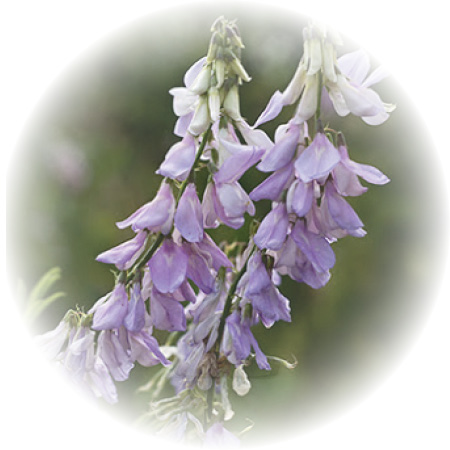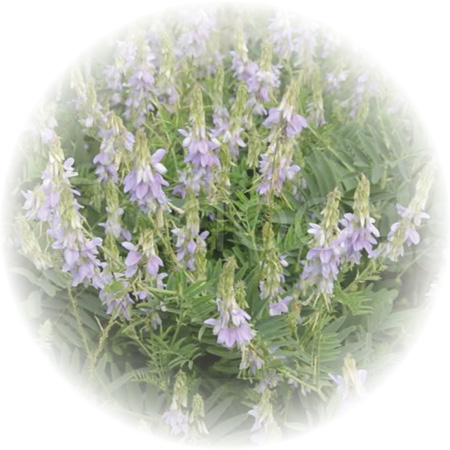Goat’s Rue (Galega officinalis) – Dried Herb, Organic
$15.76 – $157.60
Goat’s Rue, also called by its latin name Galega officinalis, is an ancient ornamental plant that has been cultivated throughout history as a forage crop, a bee plant, as a green manure and a medicinal herb. Goat’s Rue is herbaceous perennial plant whose flowers look like mini sweet peas. Its fragrant lavender-blue flower spikes are noticeable from Summer to Autumn.
This plant’s alternate compound leaves are like vetch; they are widely spreading leaves with 9-25 leaflets, medium green to grayish green, oblong in shape, smooth and the large roots like to fix nitrogen in the soil.
Goat’s Rue is a wildflower native to the Middle East but has since naturalized in Europe, Eastern United States and western Asia. This plant likes to grow in open, sunny areas with sandy soil, such as prairies, open oak and pine forests on sandy ridges and sand dunes. It has also been found in more disturbed habitats, such as roadsides and abandoned fields.
Goat’s Rue is a member of the pea family called Fabaceae (Leguminosae) that includes herbs such as Licorice Root, Alfalfa, Rooibos, Astragalus and Fenugreek. The name Galega is derived from gala, meaning milk; and ago, meaning to bring on. The English once called Goat’s Rue Italian fitch. “Fitch” being a variant of “vetch”, a twining pea-family cousin. It is still known to some as the French lilac because of the similarity in shape and color of its flowers to the common lilac.
Goat’s rue has been used in traditional European herbalism for hundreds of years. Medieval Europeans first noticed that the plant increased milk production in livestock when eaten. Goat’s rue, sometimes called Holy Hay, was first mentioned by dairy farmer Gillet-Damitte in 1873 to the French Academy in a letter where he describes milk production increased between 35 to 50 percent in his cows when given this herb.
Goat’s Rue is also reputed to increase breast tissue, which is possibly why it is known to increase breast milk. However, how it might do so is not well understood. Goat’s Rue has been known since the Middle Ages for decreasing blood sugar; possibly relieving some of the symptoms of diabetes mellitus. Traditional remedies made from the Goat’s Rue have been used to possibly reduce fevers, the herb possesses diuretic as well as diaphoretic – inducing perspiration – properties. In the fresh form, Goat’s Rue is can be toxic and should not be used.
Properties:
The taste and energetics of Goat’s Rue are bitter, cooling, mucilaginous and astringent. Goat’s Rue has an affinity to the pancreas, liver, breast, adrenal glands, digestive system, kidneys and skin. To support a mother while breastfeeding combine Goat’s Rue with Blessed Thistle, Fenugreek and Raspberry Leaf. For support of the pancreas and blood sugar combine Goat’s Rue with Siberian Ginseng, Ashwagandha, True Cinnamon and Burdock Root.
How to use:
1 teaspoon of Goat’s Rue to one cup of boiling water. Simmer for 15 minutes, strain and drink up to three cups a day.
Cautions & contraindications:
Allergic reactions can occur. Goat’s Rue is a member of the pea family of plants which also includes Peanuts, Soybean, Alfalfa and Fenugreek.
Avoid this herb if you tend to have an overabundant breast milk supply.
Hypoglycemic medications: Additive blood glucose–lowering effects may occur if using Goat’s Rue concomitantly with other hypoglycemic medications such as insulin and sulfonylureas.
This information is for educational purposes only and is not intended to diagnose, treat or cure any disease or illness. Please consult your healthcare provider prior to the use of this product if you are pregnant, nursing, taking medications or have a medical condition. Individual results may vary.



Reviews
There are no reviews yet.